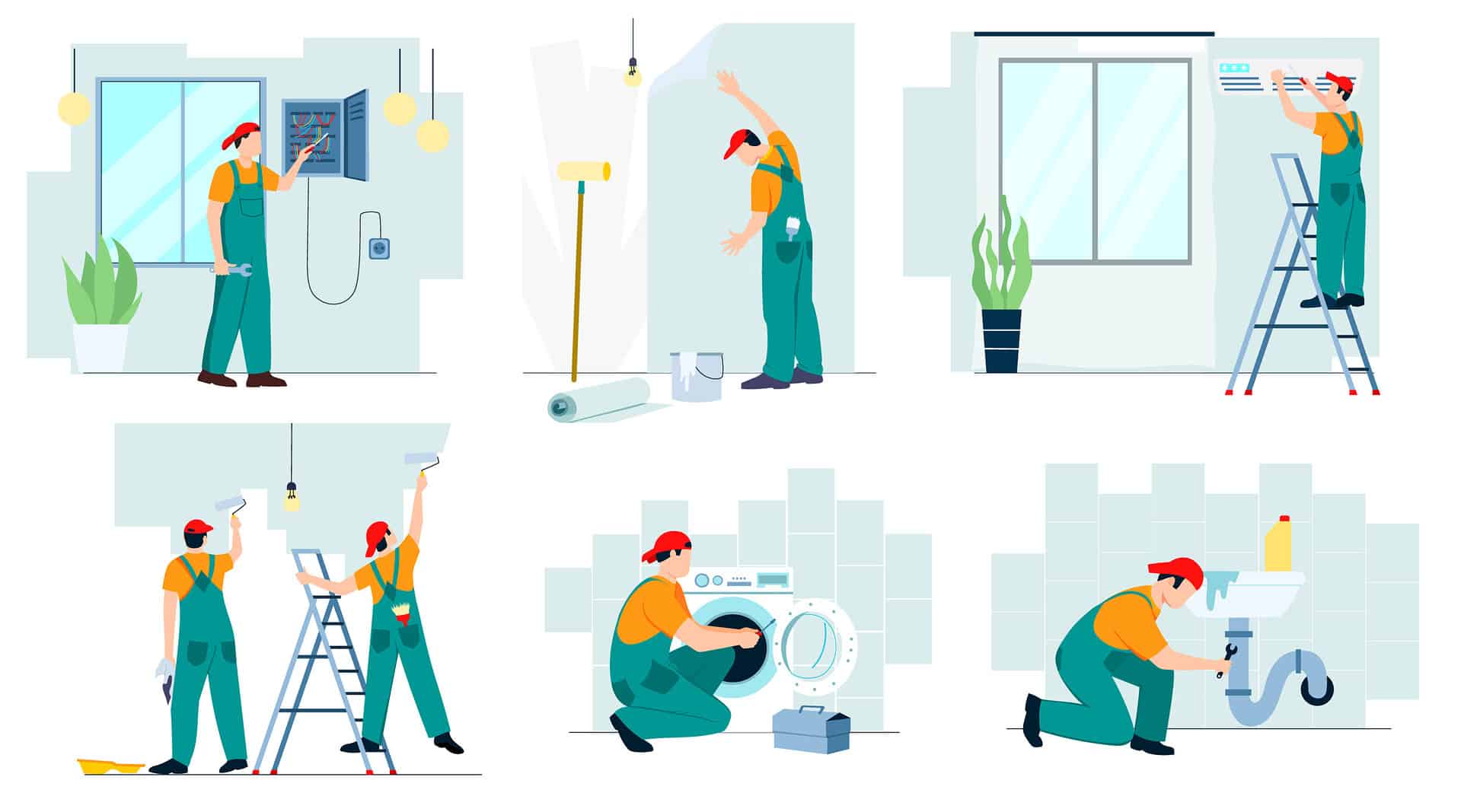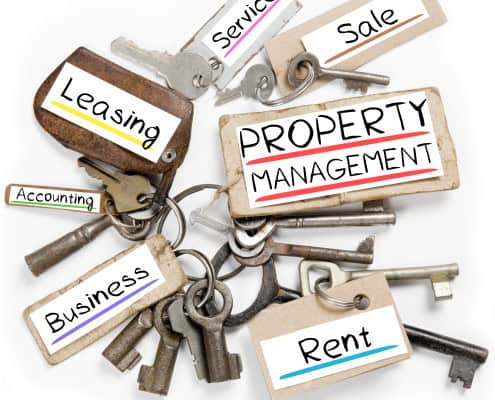
If you’re just getting started in the rental housing business, keeping your property well maintained can feel like a daunting task. Fortunately, there are some simple yet effective tips and tricks that new landlords in California can follow to help master the routine maintenance of their properties.
From proactive planning to performing routine preventative maintenance and more, here we outline five ways new landlords can become more adept at property maintenance so they are better prepared to tackle any situation that may arise – and make sure their rentals stay in tip-top shape. Read on to learn how you too can be a savvy landlord who knows how to keep their tenants happy while still preserving your most valuable asset.
1. Develop an ongoing property maintenance plan
Developing a routine maintenance plan is essential for rental housing owners in California. Considering the various components of a property—including the grounds, common areas, HVAC systems, plumbing, and more—can be overwhelming at first. However, it’s important to approach this task methodically so that nothing is overlooked. Start by setting up a schedule for when different maintenance items should be checked and (if necessary) addressed, such as regular quarterly inspections for all parts of the building or monthly testing of smoke and carbon monoxide detectors.
To help ensure this is done regularly, it’s important to create a routine property inspection checklist and schedule. This should include periodically checking in with tenants, keeping records of any maintenance that needs to be done or has been completed, and providing proper advance notice to your renters before entering the rental property to conduct any inspections, maintenance or repairs allowed under California law. California Civil Code § 1954 explains when and under what circumstances a landlord and/or their agents may enter a rental property that is currently occupied by a tenant. . If you’re authorized to enter the unit but the tenant isn’t home, consider placing a maintenance door tag on the doorknob to communicate that you are in the unit or that you’ve done work inside earlier.
Furthermore, remind yourself of what types of maintenance require certified professionals; for instance, if an issue arises with your complex’s sprinkler system, it may only be something a qualified professional can properly assess and address.
More CAA resources:
- Preventive Maintenance Checklist (CA-190)
- 24 Hour Notice to Enter Dwelling Unit/Premises (CA-180)
- Entering the Rental Unit: Owners’ Rights and Limitations
2. Know your maintenance responsibilities vs. your tenant’s responsibilities
It’s essential to know what maintenance responsibilities belong to you and which fall to your tenant.
One of the most important responsibilities that belongs to residential landlords is to keep all areas of their rental properties livable so as not to endanger their tenants’ health and safety. In fact, not only is this a responsibility of the landlord, California law requires landlords to deliver and keep their rental properties safe and in a habitable condition. This legal principle is called the warranty of habitability. Among other things, California law requires landlords to:
- Fix water leaks from the roof, doors, windows, and walls.
- Keep the plumbing, gas, heating and electrical systems in good working order.
- Install and maintain operable dead-bolt locks on each swinging entry door to the property as well as window security or locking devices for windows that are designed to be opened.
- Install, maintain and test all smoke and carbon monoxide detectors in their rental properties.
Your tenant is generally responsible for smaller things such as promptly notifying you about any items requiring repair, keeping the property clean, and paying for damages to the property beyond normal wear and tear. Additionally, a landlord should always review the terms of their lease agreement as it may impose some other minor maintenance responsibilities on their tenant such as replacing air filters once a month or light bulbs that burn out.
It’s important to understand these responsibilities early on so that there are no surprises down the road. Being aware of the each party’s maintenance obligations may help reduce the need for costly legal proceedings later on.
More CAA resources:
- Resident’s Service Request (CA-192)
- Habitability: Maintenance and Repair Responsibilities of the Owner and Tenant
- Smoke Detector Addendum (CA-087)
- Carbon Monoxide Detector Addendum (CA-065)
- Fire Protection Systems: Smoke Alarms, Fire Alarm Systems, and Fire Sprinklers
- Move-In Move-Out Itemized Statement (CA-030)
3. Find reliable contractors
When it comes to maintaining or repairing your rental property in California, you want to make sure the job is performed correctly. That’s why it’s important to find reliable contractors that are both trustworthy and competent. Having a strong professional network and researching potential contractors before some type of repair becomes necessary helps ensure that job is completed on-time, within budget and up-to-code – protecting both you and your tenants alike.
Gather referrals from any contacts you already have in the business, seek out customer reviews online, and don’t be afraid to ask plenty of questions when assessing different contractors before making a final decision. Doing your homework can help you find the right people for taking care of your rental property now and well into the future. In your search, be sure to check CAA’s Industry Directory.
4. Don’t get too fancy with landscaping
When it comes to landscaping your rental property in California, don’t get too fancy. Oftentimes, elaborate landscaping can be expensive and tough to maintain — not to mention that extensive watering may be prohibited during drought conditions. By creating a plan focused around low-maintenance and drought-tolerant plants and flowers, your lawn can be maintained without spending too much effort or money, while still achieving an attractive look for your property. Additionally, there are many resources available to help you develop a tailored plan that utilizes native plants and other helpful strategies.
5. Seek a uniform look and materials
Although variety may be the spice of life, when it comes to owning and/or managing a rental property, it’s best to keep things simple and uniform. Using the same materials, paints, flooring and appliances throughout your property makes it easier to stay on top of repairs and upkeep. Instead of having to keep track of different warranties or replacement parts for such items from various brands, you’ll have a consistent set of uniform materials.
Additionally, it makes it simpler to find qualified contractors who are familiar with working on particular types of materials or systems – saving time and money when something needs repair or updating down the road! Finally, standardization can help establish brand identity for your rental business as well as provide continuity between different properties under ownership — making them instantly recognizable as yours wherever they may be located.
Using these strategies and tips can help you stay on top of the maintenance needs for your rental property in California. Understanding what responsibilities belong to who, having a planned approach to necessary repairs and upkeep, finding contractors that specialize in rental property tasks, and managing landscaping expectations are all important steps when it comes to making sure your investment remains safe — and attractive — for years to come.
